Detailed Plans for Ezra Pound’s Atomic Bomb
Plans for a bomb, huh.
By a poet. My my.

Bulls Eye
The Mind: a Nuclear First Strike Zone
Oh, those poets. I tell ya.
Good idea, huh! I mean, check this astrologer out:
Ain’t that a found poem, now.
Becoming?
Yeah, check out the Canadian poet Christian Bök on this notion:
If you think that’s weird and exciting, you should read the whole thing.
See what I mean?
Poetry is, like, everywhere.
Here, for example, is a found poem, by a poet who has found his way into a world of action beyond most poet’s wildest dreams.
Donald Rumsfeld, Feb. 12, 2002, Department of Defense news briefing
Found Poem by a Poet lost in Byzantium
As Canadian poet Robert Kroetsch puts it, poets have been working for a long time with a medieval view of the universe.

Robert Kroetsch, Poet With Rounded Corners
and an upgraded version of Eve’s apple, a kind of intellectual astrolabe.
Here’s an inspiring vegetable from the T& Online Seed Catalogue. Just for Robert.

Found Poem Showing Its Found Poem Heart
Of course, seed makers aren’t the only ones riffing off of gardening. Here’s an interview with the Kronos Quartet, in which the musicians talk about adapting Jimi Hendrix’s Purple Haze to the classical music scene. When they played it as an encore in Vancouver in January, 2006, they blew the electrical system onstage in the Chan Centre, and had to stop before they were done playing back to their own feedback on cello and viola and violin and bass.
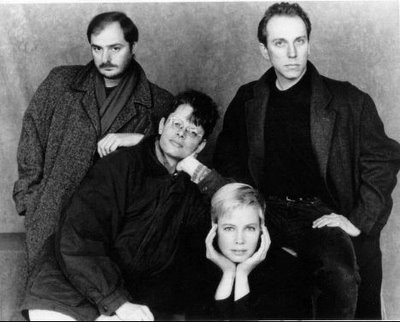
Kronos Quartet Choreographing Themselves for an Image in Light
It’s all in the Hands and the Heads
All else is darkness.
Plans for a bomb, huh.
By a poet.
So, let’s just follow up on Kroetsch’s idea for a sec, that poets are still medievalists, alchemists, if you will. Well, Kroetsch and his games in Eden aside, of course.

An Early Version of Kroetsch’s Computer
Another early version of the computer was the astrolabe.

Navigating Through Astrology: the Astrolabe
The astrolabe could be used to solve many problems.
• Night and day timepiece.
• Surveying tool (to measure distances and make more accurate maps).
• Astronomical calculator. A kind of HP calculator of its day.
In its most usual form, the mariner's astrolabe consists of an evenly balanced disk hung by a ring (on a thread or line) and provided with a rotatable alidade with sights. Turning within the circle of degrees marked on the outer edge, the alidade was used to measure the altitudes of the sun or stars. To shoot the sun, the navigator would hold the astrolabe so that sun's rays passed through the upper vane, then turn the alidade until the small beam of light fell on the hole of the lower vane. Presto.

World War II Photographer Shooting the Sun
Build Your Own Version of this Art Installation Here.
For your own safety, do, please, pay special attention to the eye shield. Thanks.
So, what’s a guy to do? He wants to be true to God, but God doesn’t speak to people in words, so you want to be true to God without words, but all you have is words. That’s the poet’s problem.
So, suddenly you have to talk to God without your head, but you’re an intellectual, right, you know how to use that head of yours, right, and suddenly God says, na na, try it without the noggin.
Give a guy a headache, that’s what.

A Poet’s Headache: Flyer Found in Newspaper Box in Chicago
48 Flyers were found over the course of a year.
Distribution was often erratic and unpredictable.
See the entire series.
This is a headache that even Tylenol won’t fix, and Bayer Aspirin? Aw, crumb. Bayer invested in Auschwitz.
It used to be that you could just go to confession, take a cookie on the tongue, transform it through your faith into Christ’s body, have a swig of sanctified wine, transform it through Christ’s Grace into his blood, and swallow hard. That’s how you talked to God. In your gut.
Fortunately, there is relief! Don’t be sad. We have good news! We have new technology to talk to God with now!

A Handheld Found Poem, Primed to Talk with God
Astrological relief is always no more than a button away.
Of course, you’ve got to know how to read the graphs. They go up, and they go down. Like a seesaw. It’s dizzying, that’s what it is. In the Realpolitik of modern life, most people just give up and start a war. Those more bound up with alchemy give up and start a church. (For an exhausting list of new churches, just go to the Watchman Fellowship. For the full experience, scrolling down is more efficient than searching.)
Poor poets. In the modernist century we’ve just come through, the two, wars and churches, often got kind of confused. Here’s an experimental US Navy aircraft, showing just how difficult it was at times for alchemists lost in the byzantine corridors of the new poetics:
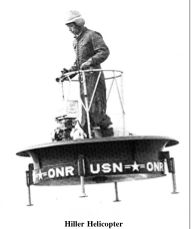
The Hiller Helicopter: The Ascension of the Virgin Mary for Everyman
The hardest thing for people to get their heads around in the last century is that a poem has real consequences for real lives. That’s the kicker.
Trying to sort it all out, here’s what the American Catholic Church has to say about justifications for war, which, if you think about it, isn’t a particularly Christian act, is it:
How to Fight War and Maintain Your Soul
A handbook for war, meant to prevent war. Source.
Check out the Saint Anthony search engine. And the St. Anthony Messenger. Free!
Poets, all.
Just think, though: the Astrolabe led Columbus to the New World, like a jumping jack upon a string, and then what?

The Czechoslovakian Columbus Discovering the New World
portrayed as an astrolabe.
Pull on his cleverlY-positioned string and he raises arms and legs in surprise.
Then what, indeed. You gotta feel for the guys in the New World our little dancing puppet found. A little alchemical science and suddenly they had a whole world to remake. Here, for an example, are a bunch of them rebuilding the Matterhorn:

Rebuilding the Matterhorn for the New World.
March 1959. Anaheim, California.
God’s work is never done.
And then, there’s ballet. There’s another throwback. There’s another one of God’s hints to how He likes to conduct a conversation, or how people think he likes to conduct one, or just the best we can do, damn it.
Damn it, see: in ballet, nobody talks, because dancers understand this thorny problem with God very well: if you want to dance with God, you gotta dance with your body, but the body doesn’t talk, although it does have vocal cords; although it has vocal cords it can’t use them to talk, because the music, the damned, enthralling music is making all the noise, the damned enthralling Hallelujah of God, and you can’t sing it, because, well, what are you going to do? Shout down God? Not likely. Dance it? Well, hardly. If God has a body, it’s ours.
Ballet is a kind of prayer.

Crossing the Toes and Hoping for the Best:
Ballet’s Dizzying Fifth Position
Yes, you can try this at home: Place one foot in front of the other foot, with both turned out. Feet should be toe to heel.
Here’s the long version, from Mae Blacker Freeman’s Fun With Ballet: A Beginners’ Book for Future Ballerinas, photographed in her own living room, to show girls that they can do this at home:

Poetry by the Seat of Your Pants:
the Fifth Position of Corporeal Poetics
In the Twentieth Century, in Pound’s era, photographers gave dance a whirl. That was the rage in those days: to make everything new, to see just how far the new technology could take all of us. It sounded like a reasonable plan. Where did it take us? Aha!
Ballet, that’s where it took us. Check it out:
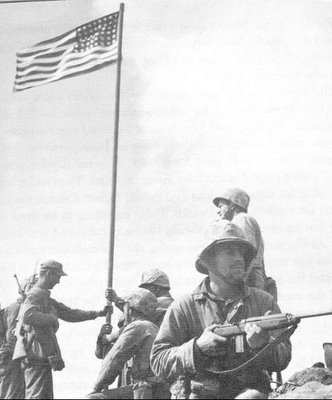
Here is the flag being raised after the capture of Iwo Jima in World War II.
Photo by Lou Lowery.
Lou had a rather bleak view of the war, didn’t he.
Wait a minute? Not the one you know from the history books? Yeah, I know what you mean. That one was posed for the photographer. I mean, for the first one, they needed a gun. They needed to keep their bearings. They needed to be on the lookout. They were, in effect, looking out. On the second one, we get to look in. It was, thus, understandably enough, the second one that became the most reproduced photo of all time, not the first. Iwo Jima II, the Sequel, captured, so they said at the time and so they still say, the soul of a nation.
You can’t just leave a thing like that to chance. A thing like that is theatre. Check it out:

The Flag: Act Two
No gun required for this one, and this time you actually have a view.
Photo by Joe Rosenthal.
And that’s just the difficulty of taking poetry to the streets. The streets start to mess with your head.
You see, I could show you plans for a nuclear bomb, like this German sketch:

Astrolabe with a Core of Enriched Uranium
Hitler was loath to use it, because he thought it would melt down to the core of the earth and blow his 1000 Year Reich into atoms. No one knew the answer to that fear.
As if fear has any answer other than more fear.
The problem is, as the Argentinean writer Jorge Luis Borges said in his essay "The Analytical Language of John Wilkins":

Jorge Luis Borges
The ghostwriter of God’s secret dictionary.
The world recedes in infinite regression, like a hall of mirrors.
So does Ezra Pound’s nuclear bomb. So, let’s catch it quick, before it scuttles into its hole in the wainscoting.
Hot on the trail, here’s one of Pound’s blueprints, rescued from the US Army Detention Camp at Pisa, where he was up against a charge of treason, and where his fellow inmates were occasionally taken out and hung by the neck until dead:
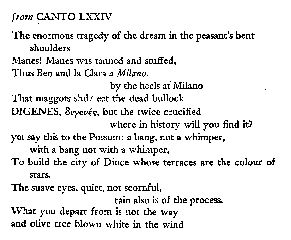
Schematic Diagram of a Nuclear Bomb
in an ancient cipher
buried within Ezra Pound’s Canto LXXIV
Taking a bomb like that apart is, of course, a tricky business. After all, you don’t want to set it off. Here, however, are the pieces:
So, that’s how it’s done.
Here’s the fuse mechanism:
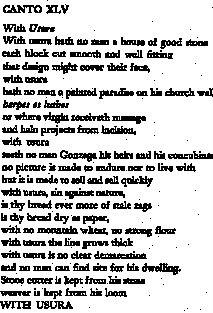
Fuse Mechanism for the Pound Atomic Bomb
Its counterpart in music would be the drone, like the bagpipe. HNNNNNNNNNNNNNNNNNNNNNNNNNNN.
Hear that?

HNNNNNNNNNNNNNNNNNNNNNNNN!
Truth is stranger than fiction: that’s what poetry does, too. Who knew!

Early Bagpipe Player
In poetry, just as in bagpipe playing, structure is not a device. It is the message.

The Medium is the Message

A poetry machine, the ultimate struggle with silence.
"A slave is one who waits for someone else to free him."
Ezra Pound.
But, you know, Pound started off in the age of steam engines:

Old Steam Engine in Fremont, California
The internet of its day.
Now? Off-line. I mean, this baby was even pre-Commodore 64.
Robert Kroetsch was right. It’s all getting a little rusty. All this heavy industry, this bang the world out of coal and iron, I mean, it’s so old. Better to plant a garden, indeed.
Now the world is just a poem, that’s all. Now we’re in the age like this:

Electronic Steam Train
Ain’t that the thing. In all his struggle to beat silence, through words, Pound succeeded, and then found himself trapped in words. He was so annoyed, that for his last eight years he did not say a thing. Well, not to poets and literary critics, anyway. He still had lots of time to chat with people he knew from the street, in Venice. But to the rest of them he clammed up and glared.
Well, it was a nice gesture, but it was too late. The cat’s out of the bag. There’s no going back, not even to the Hiller VZ-1E Flying Plahome VTOL Experimental Vehicle.
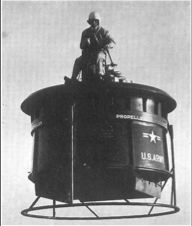
Pandora’s Washtub?
The US Army gets in on the poetry game, lifting a man to God with the force of an idea.
Thing is, now that Pound opened up Pandora’s box, the mind has invaded the territory of the body. The ballerinas were there first, but that doesn’t make it any easier.
There’s no going back.

Feet as Quantum Particles.
No-one knows the half life on these things.
Like the dancers say: it’s all about the body. It’s all about the body and covering it up.

A Walrus in First Position,
without her ballet slippers on.
Photo by Paul Nicklen.
Blush.
Poetry, huh.
Next week: Goethe’s Garden
By a poet. My my.

The Mind: a Nuclear First Strike Zone
Oh, those poets. I tell ya.
Good idea, huh! I mean, check this astrologer out:
My message is simple: astrology is a tool. Knowing the energy patterns of the day (or month or year) help us make better decisions. Of course, feelings still overwhelm us, but when a person thinks in cycles, situations blend and flow without requiring constant absolutes. When we view life as always 'becoming', beginnings and endings take on new meaning - bring hope and excitement. Life always holds great promise. We read the messages in the stars' movements to better dance in tune.Astrologer’s Description of Well... What, exactly?
Ain’t that a found poem, now.
Becoming?
Yeah, check out the Canadian poet Christian Bök on this notion:
The new millennium brings with it the prospect of poetry becoming a weird genre of science-fiction, fusing aesthetic concepts with technical conceits...
If you think that’s weird and exciting, you should read the whole thing.
We are probably the first generation of poets who can reasonably expect to write poetry for inhuman readers, be they aliens, robots, or clones.
See what I mean?
Poetry is, like, everywhere.
Here, for example, is a found poem, by a poet who has found his way into a world of action beyond most poet’s wildest dreams.
The Unknown
As we know,
There are known knowns.
There are things we know we know.
We also know
There are known unknowns.
That is to say
We know there are some things
We do not know.
But there are also unknown unknowns,
The ones we don't know
We don't know.
Found Poem by a Poet lost in Byzantium
As Canadian poet Robert Kroetsch puts it, poets have been working for a long time with a medieval view of the universe.

and an upgraded version of Eve’s apple, a kind of intellectual astrolabe.
Among poets, Kroetsch is perhaps best known for his long poem "Seed Catalogue" It was inspired by vegetables.
Here’s an inspiring vegetable from the T& Online Seed Catalogue. Just for Robert.

‘Purple Haze’ is a unique smooth purple Carrot that tapers to a point and reveals a bright orange center when cut. Carrots are good size at 25-28 cm (10-11 in) long! AAS Judges noted the sweet flavor during taste tests. The best presentation of ‘Purple Haze’ Carrots will be when used raw, since cooking will dissolve the purple color. Only normal Carrot growing conditions are needed to produce an abundance of 'Purple Haze' Carrots. Grow 'Purple Haze' Carrots in large containers, with herbs such as parsley and sage.
Of course, seed makers aren’t the only ones riffing off of gardening. Here’s an interview with the Kronos Quartet, in which the musicians talk about adapting Jimi Hendrix’s Purple Haze to the classical music scene. When they played it as an encore in Vancouver in January, 2006, they blew the electrical system onstage in the Chan Centre, and had to stop before they were done playing back to their own feedback on cello and viola and violin and bass.

It’s all in the Hands and the Heads
All else is darkness.
Plans for a bomb, huh.
By a poet.
So, let’s just follow up on Kroetsch’s idea for a sec, that poets are still medievalists, alchemists, if you will. Well, Kroetsch and his games in Eden aside, of course.

Cutting an apple through it's girth was the secret handshake of the mysterious Pythagoreans, those masterly mathematicians who understood well, the magical divine proportion (aka the golden section) of the pentagram ... for only through it's girth is the arrangement of the apple's five inner seeds revealed. Check it out at Pregnant Earth.
Another early version of the computer was the astrolabe.

The astrolabe could be used to solve many problems.
• Night and day timepiece.
• Surveying tool (to measure distances and make more accurate maps).
• Astronomical calculator. A kind of HP calculator of its day.
In its most usual form, the mariner's astrolabe consists of an evenly balanced disk hung by a ring (on a thread or line) and provided with a rotatable alidade with sights. Turning within the circle of degrees marked on the outer edge, the alidade was used to measure the altitudes of the sun or stars. To shoot the sun, the navigator would hold the astrolabe so that sun's rays passed through the upper vane, then turn the alidade until the small beam of light fell on the hole of the lower vane. Presto.

Build Your Own Version of this Art Installation Here.
For your own safety, do, please, pay special attention to the eye shield. Thanks.
So, what’s a guy to do? He wants to be true to God, but God doesn’t speak to people in words, so you want to be true to God without words, but all you have is words. That’s the poet’s problem.
So, suddenly you have to talk to God without your head, but you’re an intellectual, right, you know how to use that head of yours, right, and suddenly God says, na na, try it without the noggin.
Give a guy a headache, that’s what.

48 Flyers were found over the course of a year.
Distribution was often erratic and unpredictable.
See the entire series.
This is a headache that even Tylenol won’t fix, and Bayer Aspirin? Aw, crumb. Bayer invested in Auschwitz.
It used to be that you could just go to confession, take a cookie on the tongue, transform it through your faith into Christ’s body, have a swig of sanctified wine, transform it through Christ’s Grace into his blood, and swallow hard. That’s how you talked to God. In your gut.
Fortunately, there is relief! Don’t be sad. We have good news! We have new technology to talk to God with now!

Astrological relief is always no more than a button away.
Of course, you’ve got to know how to read the graphs. They go up, and they go down. Like a seesaw. It’s dizzying, that’s what it is. In the Realpolitik of modern life, most people just give up and start a war. Those more bound up with alchemy give up and start a church. (For an exhausting list of new churches, just go to the Watchman Fellowship. For the full experience, scrolling down is more efficient than searching.)
Poor poets. In the modernist century we’ve just come through, the two, wars and churches, often got kind of confused. Here’s an experimental US Navy aircraft, showing just how difficult it was at times for alchemists lost in the byzantine corridors of the new poetics:

The hardest thing for people to get their heads around in the last century is that a poem has real consequences for real lives. That’s the kicker.
Trying to sort it all out, here’s what the American Catholic Church has to say about justifications for war, which, if you think about it, isn’t a particularly Christian act, is it:
• Just cause. War is permissible only to confront "a real and certain danger," i.e., to protect innocent life, to preserve conditions necessary for decent human existence and to secure basic human rights.
• Competent authority. War must be declared by those with responsibility for public order, not by private groups or individuals.
• Comparative justice. In essence: Which side is sufficiently "right" in a dispute, and are the values at stake critical enough to override the presumption against war? Do the rights and values involved justify killing? Given techniques of propaganda and the ease with which nations and individuals either assume or delude themselves into believing that God or right is clearly on their side, the test of comparative justice may be extremely difficult to apply.
• Right intention. War can be legitimately intended only for the reasons set forth above as a just cause.
•Last resort. For resort to war to be justified, all peaceful alternatives must have been exhausted.
•Probability of success. This is a difficult criterion to apply, but its purpose is to prevent irrational resort to force or hopeless resistance when the outcome of either will clearly be disproportionate or futile.
• Proportionality. This means that the damage to be inflicted and the costs incurred by war must be proportionate to the good expected by taking up arms.
A handbook for war, meant to prevent war. Source.
Check out the Saint Anthony search engine. And the St. Anthony Messenger. Free!
Poets, all.
Just think, though: the Astrolabe led Columbus to the New World, like a jumping jack upon a string, and then what?

portrayed as an astrolabe.
Pull on his cleverlY-positioned string and he raises arms and legs in surprise.
Then what, indeed. You gotta feel for the guys in the New World our little dancing puppet found. A little alchemical science and suddenly they had a whole world to remake. Here, for an example, are a bunch of them rebuilding the Matterhorn:

March 1959. Anaheim, California.
God’s work is never done.
And then, there’s ballet. There’s another throwback. There’s another one of God’s hints to how He likes to conduct a conversation, or how people think he likes to conduct one, or just the best we can do, damn it.
Damn it, see: in ballet, nobody talks, because dancers understand this thorny problem with God very well: if you want to dance with God, you gotta dance with your body, but the body doesn’t talk, although it does have vocal cords; although it has vocal cords it can’t use them to talk, because the music, the damned, enthralling music is making all the noise, the damned enthralling Hallelujah of God, and you can’t sing it, because, well, what are you going to do? Shout down God? Not likely. Dance it? Well, hardly. If God has a body, it’s ours.
Ballet is a kind of prayer.

Ballet’s Dizzying Fifth Position
Yes, you can try this at home: Place one foot in front of the other foot, with both turned out. Feet should be toe to heel.
Here’s the long version, from Mae Blacker Freeman’s Fun With Ballet: A Beginners’ Book for Future Ballerinas, photographed in her own living room, to show girls that they can do this at home:

the Fifth Position of Corporeal Poetics
Note the problem Columbus knew all too well: "Now you will have to remember to keep your knees straight because your front knee will want very much to bend a little."
Ain’t that always the way.
In the Twentieth Century, in Pound’s era, photographers gave dance a whirl. That was the rage in those days: to make everything new, to see just how far the new technology could take all of us. It sounded like a reasonable plan. Where did it take us? Aha!
Ballet, that’s where it took us. Check it out:

Photo by Lou Lowery.
Lou had a rather bleak view of the war, didn’t he.
Wait a minute? Not the one you know from the history books? Yeah, I know what you mean. That one was posed for the photographer. I mean, for the first one, they needed a gun. They needed to keep their bearings. They needed to be on the lookout. They were, in effect, looking out. On the second one, we get to look in. It was, thus, understandably enough, the second one that became the most reproduced photo of all time, not the first. Iwo Jima II, the Sequel, captured, so they said at the time and so they still say, the soul of a nation.
You can’t just leave a thing like that to chance. A thing like that is theatre. Check it out:

No gun required for this one, and this time you actually have a view.
Photo by Joe Rosenthal.
(Joe understood that reality was a fabrication that had to be fabricated.) Good man.
Hey, note the Piscatorial set.
Yup, the German theatre director Erwin Piscator was fooling around with these techniques two decades before the Americans started staging them. Who knew?
Still, the evidence speaks for itself:
Here’s a photograph of his production of Tidal WaveFilm, Live Action, and Statuary
First Rehearsals for the Taking of Iwo Jima
from Erwin Piscator’s 1926 production of Tidal Wave at the Volksbühne in Berlin.
Like any good artist looking for perfection, and unwilling to remove himself from the picture, Rosenthal didn’t stop there, at all the helping hands lifting the 100 pound flagpole on top of a mound of what looks like protoparts for the Matterhorn. Here he is having another go at it:Cast Party
Joe Rosenthal Taking a Picture of the Boys After the Second Flag Was Safely UpAhh... that’s better. Hat’s off to you, Joe.
Question is: Who took this picture?
Question is: How many photographers did the marines have for that show?
Want to see it again? Here it is on Instant Replay: Live: The Raising of the Flag on Iwo Jima Yes, in this bloody awful battle, this fight to the death, they had a film cameraman along, too.
Who was Best Boy, I wonder?
Who was Grip?
Talk about poetry ahead of its time. There at the end of lyrical poetry, spontaneity of emotion took careful planning. A guy had to organize this stuff like clockwork. No longer could one man scribbling on paper in one attic get the job done.Chatterton in His Garret: Lyrical Poet Overdosing on Romanticism
but Getting The Job DoneFor two centuries, Chatterton has been the image of the poet starving himself for the betterment of a society that, cruelly, didn’t care.
What is that on the left? Pandora’s box?
And those feet: is that fifth position?
Ballet. Everywhere you look.
So, let’s look at it. To solve the problem of silence, the quandary of speaking with God when you can’t speak with God and telling your emotions on stage when the music is drowning you out with its choirs of angels, ballet has come up with code, to help the audience understand the emotions in a dance. It’s as much as giving up in defeat before you even begin, but there it is. If you’re going to understand 20th century journalism, if you’re going to understand those war correspondents in the Pacific Theatre of World War II, you’re going to need to understand this.
Kind of the iambic pentameter of our time.
Kind of.Ballerinas descending on a Hilltop in Vietnam
We’re a long way from the Hiller VZ-1 Pawnee Flying Plathome, aren’t we.
Oh, yeah, here’s the soundtrack:LOVE Hands cupped under the heart.
MARRY With the index finger of the right hand make a large circle and then point to the wedding-ring finger of the left hand.
BEAUTIFUL With the back of the right hand, circle the face in a caress.
SADNESS Trace tears running down the face with fingers.
WEEPING Hide the face in both hands or rub eyes with clenched fists.
DANCE Circle the hands around each other above the head.
KISS Touch the lips with the finger.
BEG Clasp hands, elbows dropped.
ANGER Arms above the head, clenched fists are shaken.
QUEEN With the thumb in and fingers lifted, make a three-pointed crown above the head.
As usual, the ballerinas were there first. Who knew.The Influence of Ballet on the American Marines Note the clever choreography and the webcam on the MP’s helmet.
Note as well the gardener’s kneepads.
Planting a seed in the garden of the Lord.
And the Greek Chorus in the background.
Amen.
The marines, for one. They knew. Here’s their slogan:First to Fight. Marines have been in the forefront of every American war. They entered the Revolution in 1775, even before the Declaration of Independence was signed! Source: Marine Wives.
And that’s just the difficulty of taking poetry to the streets. The streets start to mess with your head.
You see, I could show you plans for a nuclear bomb, like this German sketch:

Just one version of the German Atomic Bomb. This was the low tech version. Basically a nuclear reactor in a Bathysphere, the force of impact would replace the carefully-aligned high explosives necessary to trigger the American version.
Hitler was loath to use it, because he thought it would melt down to the core of the earth and blow his 1000 Year Reich into atoms. No one knew the answer to that fear.
As if fear has any answer other than more fear.
The problem is, as the Argentinean writer Jorge Luis Borges said in his essay "The Analytical Language of John Wilkins":
Obviously there is no classification of the universe that is not arbitrary and conjectural. The reason is very simple: we do not know what the universe is. "This world", wrote David Hume, "...was only the first rude essay of some infant deity who afterwards abandoned it, ashamed of his lame performance; it is the work only of some dependent, inferior deity, and is the object of derision to his superiors; it is the production of old age and dotage in some superannuated deity, and ever since his death has run on..." We must go even further; we must suspect that there is no universe in the organic, unifying sense inherent in that ambitious word. If there is, we must conjecture its purpose; we must conjecture the words, the definitions, the etymologies, the synonymies of God’s secret dictionary.

The ghostwriter of God’s secret dictionary.
The world recedes in infinite regression, like a hall of mirrors.
So does Ezra Pound’s nuclear bomb. So, let’s catch it quick, before it scuttles into its hole in the wainscoting.
Hot on the trail, here’s one of Pound’s blueprints, rescued from the US Army Detention Camp at Pisa, where he was up against a charge of treason, and where his fellow inmates were occasionally taken out and hung by the neck until dead:

in an ancient cipher
buried within Ezra Pound’s Canto LXXIV
Taking a bomb like that apart is, of course, a tricky business. After all, you don’t want to set it off. Here, however, are the pieces:
•introductory statement (like any good essay)The enormous tragedy of the dream in the peasant’s bent shoulders
• soundbite, like any good radio news report:Manes! Manes was tanned and stuffed
• historical commentary (death of Mussolini), like any good newsreelThus Ben and la Clara a Milano...
• Reference back to the soundbite, like any good play-by-play at the superbowl:That maggots shd/eat the dead bullock
Digenes,
• Narrator making a plea to the audience, breaking the proscenium arch:but the twice crucified, where in history will you find it?
• Literary reference to T.S. Eliot (de rigeur)yet say this to the Possum: a bang, not a whimper
• Literary reference, to tie all the themes together (Dante)To build the city of Dioce whose terraces are the colour of stars.
So, that’s how it’s done.
Here’s the fuse mechanism:

Its counterpart in music would be the drone, like the bagpipe. HNNNNNNNNNNNNNNNNNNNNNNNNNNN.
Hear that?

Members of the RAAF Central Band discovering the importance of homely tunes while playing for personnel in the Middle East Area of Operations.
Note: In music, a drone is a harmonic or monophonic effect or accompaniment where a note or chord is continuously sounded throughout much or all of a piece, sustained or repeated, and most often establishing a tonality upon which the rest of the piece is built.
Truth is stranger than fiction: that’s what poetry does, too. Who knew!

In poetry, just as in bagpipe playing, structure is not a device. It is the message.
Eve: How does Pound get away with making a bomb?
Adam: Yeah. We weren’t too good at getting away with anything.
Harold: Um, Eve?
Eve: Yes, Harold?
Harold: What’s your middle name, Eve?
Adam: Don’t tell him Eve. He can’t ask you that.
Eve: Oh, it’s all right, Adam. Pandora, Harold. It’s Pandora. Your turn, Harold.
Harold: Arthur.
Eve: No, not the name. What a curious name. No, I mean how Pound got away with it.
Harold. Oh. It’s the frame. That’s what it is. It’s the principle of the found poem. That’s how Pound got away with it.

A stamp imitating alchemist Marshall Mcluhan holding an Astrolabe Bagpipe focussed on an image of Marshall Mcluhan, all in an easy-tear, lick with your tongue and stick frame. That’s how Pound got away with it.
Adam: That’s what it is?
Harold: That’s what it is.
Adam: By taking a piece of writing out of context, no matter where it is found, it becomes a poem?
Harold: That’s the principle. But actually, it’s not just a poem.
Eve: It’s not?
Harold: No.

Poetry composed by a machine for its own instinctive purposes and projected on a wall for a human audience.
Marshall Mcluhan, who coined the phrase, "The Medium is the Message," was a friend of Ezra Pound. He used to go down to Washington to visit him in the insane asylum.
Note the split ray of light.
Ezra Pound.
But, you know, Pound started off in the age of steam engines:

The internet of its day.
Now? Off-line. I mean, this baby was even pre-Commodore 64.
Robert Kroetsch was right. It’s all getting a little rusty. All this heavy industry, this bang the world out of coal and iron, I mean, it’s so old. Better to plant a garden, indeed.
Now the world is just a poem, that’s all. Now we’re in the age like this:

It’s just the whistle, really. Instead of an entire industrial establishment to support it, with section stops and coal mines and water towers sprinkled down the track at towns that never became towns but which were marked on maps nonetheless, all you need is a nine volt battery. Toot toot.
Ain’t that the thing. In all his struggle to beat silence, through words, Pound succeeded, and then found himself trapped in words. He was so annoyed, that for his last eight years he did not say a thing. Well, not to poets and literary critics, anyway. He still had lots of time to chat with people he knew from the street, in Venice. But to the rest of them he clammed up and glared.
Well, it was a nice gesture, but it was too late. The cat’s out of the bag. There’s no going back, not even to the Hiller VZ-1E Flying Plahome VTOL Experimental Vehicle.

The US Army gets in on the poetry game, lifting a man to God with the force of an idea.
Thing is, now that Pound opened up Pandora’s box, the mind has invaded the territory of the body. The ballerinas were there first, but that doesn’t make it any easier.
Eve: I was there.
Adam: It was heavy holding her up there so she could pick the apple.
Eve: Pas de deux, Adam.
Adam: Pardon?
Eve: A duet. In its traditional form, it begins with an entree and adagio, followed by solo variations for each dancer, and a coda.
Adam: Yeah, whatever. A coda? What’s the coda?
There’s no going back.

Feet as Quantum Particles.
No-one knows the half life on these things.
Like the dancers say: it’s all about the body. It’s all about the body and covering it up.

without her ballet slippers on.
Photo by Paul Nicklen.
Blush.
Poetry, huh.
Next week: Goethe’s Garden





